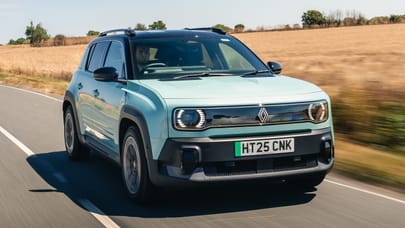
How does fully 'active' suspension work? And is it about to go mainstream?
Imagine you're skiing...
We're not talking about adaptive suspension here. Active suspension is different. It can actually generate a moving force in the suspension. So it’ll pull a wheel into the body when you hit a bump and push it down for a pothole. Force sensors and accelerometers in the suspension and body measure when a wheel hits a bump, or when braking or cornering loads would cause dive or roll. Actuators then keep things level.
With this full body control, much else is possible. A conventional sports chassis has to be hard riding because otherwise steering and braking reflexes are delayed by initial spring compression. The active chassis is super stiff just when needed. It can also subtly alter the weight on the outside wheels in a corner, changing the roll stiffness balance and tuning understeer or oversteer.
Such a car is also self-levelling for load. And can raise and lower the body for you to get in and out, or drop for high speed aero. Or even match your bumper height to that of the vehicle you’re having a crash with. Ferrari was first out of the traps with the system in the Purosangue. Each of its four dampers has an electric motor inside, able to push or pull the damper rod, dropping or lifting the wheel. Porsche’s system on top Taycans and Panameras uses quick acting hydraulics to achieve the same effect.
Now Nio’s top ET9 saloon has adopted a design based on sensors and calculations developed by the Bose audio company 25 years ago. It was never put into production because Bose wanted to use electromagnetic coils, but the coils were never forceful enough. A company called ClearMotion bought the control patents, but uses hydraulics in the system it sells to Nio.
It might seem odd a car can sense a bump as it happens, and react near instantly. To get an idea of what’s happening, consider skiing on a bumpy slope. The feet move up and down, the legs and hips flex, the head stays level. To do it, you’re sensing the force as a bump hits, and tensing or relaxing your muscles.
But for better effect you also build a full contour map of the snow by looking ahead. In China, every Nio ET9 is uploading the position of every bump to the cloud. The plan is that later on, the ET9 fleet will each be able to download a high definition 3D surface map as they drive, so the suspension can prepare itself for what’s about to happen beneath the tyres.
Top Gear
Newsletter
Thank you for subscribing to our newsletter. Look out for your regular round-up of news, reviews and offers in your inbox.
Get all the latest news, reviews and exclusives, direct to your inbox.
Trending this week
- Car Review
BMW iX3








